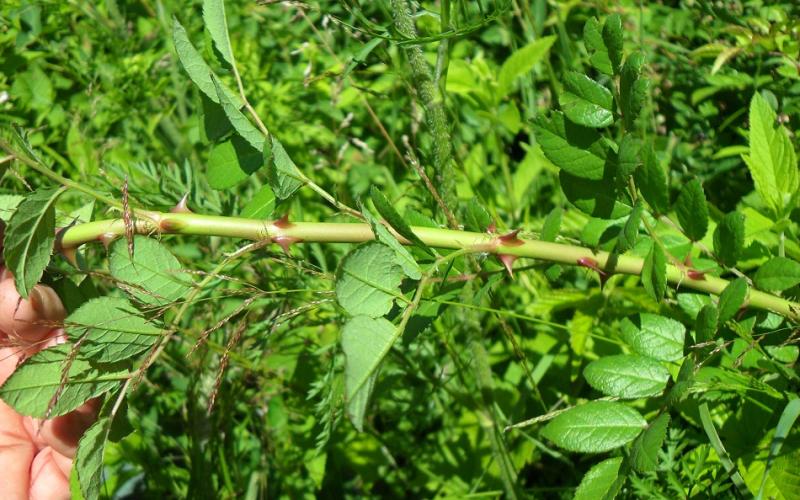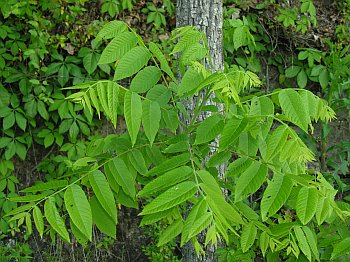Part 1:
1 The geology of Ohio (if not regarded too closely) may be divided neatly into two parts. Contrast these two parts in terms of their geographic location, types of underlaying rocks and their physical properties, and the landscape/topography that characterizes each:
Western Ohio: Limestone, unresistant in humid climate, after millions of years of erosion has been worn down to almost flat land.
Eastern Ohio: Sandstone (Shale in east), resistant rock (Shale is very unresistant), carved valleys where shale was not covered by sandstone.
2. The reason for the difference in kinds of rocks is not difficult to understand. Describe the original sequence of sedimentary rock strata (three types in order from top to bottom), an arch that formed 200 million years ago noting where the crest of the arch was located compared with the low-lying toe of the arch, and an important river system that occupied OH for a long time. (Be sure to give the name of the river, state about how many years it flowed and what effect it had upon the landscape. What curtailed the activities of the river?)
The sedimentary sequence was limestone layers, overlain by shale layers, which were overlain by sandstone. The arch was formed by pressures and created the Appalachian mountains. The crest of the arch was in the west, which had the most erosion revealing the limestone. The low-tying toe of the arch was in the east, where there is less erosion. The Teays River was a preglacial river causing most of the erosion in the west. It was present for 200 million years and was curtailed by glaciers of the ice age.
3. Pleistocene glaciers invaded OH a few hundred thousand years ago or less. What feature of the landscape slowed the glaciers and so caused there to be a glacial boundary cutting across OH?
The glaciers were slowed by the sandstone hills and did not reach past the latitude of Canton.

4. Describe “glacial till” in terms of its general composition (a definition of till), and how it differs in eastern and western OH.
Sand, silt, clay and boulders make up till and was deposited by melting glaciers. In western Ohio, the til was rich in lime and clay, while in eastern Ohio, it lacks in these, except near the margins of sandstone hills.
5. Contrast the basic substrate for plants in western and eastern OH in terms of drainage, aeration, pH (limey versus acid) nutrient availability.
In western Ohio, the substrate for plants is limey, poorly drained and inadequately aerated, but abundant in nutrient availability. In eastern Ohio, the substrate for plants is acidic, well drained in most area, well aerated but lacking in nutrient availability, besides where the sandstone is mantled by till.
6. Name 5 species of trees/shrubs that have a distribution generally limited to limestone or limey substrates (such as Ohio’s Lake Erie islands).
Redbud, Red-cedar, Fragrant Sumac, Hackberry, Blue Ash.
7. Name 5 species of trees/shrubs that have a distribution generally limited to high-lime, clay-rich substrates developed in the thick glacial till of western Ohio.
Sugar Maple, Beech, Red Oak, Shagbark Hickory, White Oak.
8. Name 5 species of trees/shrubs that have a distribution generally limited to sandstone hill of eastern OH.
Chestnut Oak, Sourwood, Scrub Pine, Pitch Pine, Hemlock.
9. What is the major determinant of the distribution of each of these species: a) sweet buckeye (contrast with hemlock), b) hemlock (contrast with sweet buckeye, c) rhododendron?
The sweet buckeye does not occur anywhere inside the glacial till boundary. The hemlock is located in eastern Ohio, but extends far north. The rhododendron is located south of the glacial til boundary. The major determinant is substrate.
Part 2:
Acid Loving Plants:
Chestnut Oaks are used for lots of household work like furniture and house trim like White Oak. It is important food for animals like deer, chipmunks and mice (USDA).

Eastern Hemlocks are used for their pulp specifically for railroad ties. It is important food source for deer, squirrels and rabbits (Peterson).

Sourwood is used for tool handles and for fuel (USDA). Deer eat the twigs of sourwoods (Peterson).

White Oaks are used for similar uses as the chestnut oak, like furniture, but also are used for railroad beams. Animals like many species of birds and squirrels use this as a food source (USDA).
Ferns:
New York Ferns are monomorphic meaning they produce spores under their leaves, pinnate-pinnatfid meaning the fern is divided into lobed leaflets, and peltate meaning the indusium is circular, and attached to the fern leaf blade by a central stalk.

Cinnamon Ferns are hemidimorphic meaning the fronds are separated between sterile and fertile parts, they are pinnate-pinnatifid meaning the fern is divided into lobed leaflets, and naked sorus meaning they have no indusium.

Invasive Plants:
Multiflora Rose is an invasive plant from China, Japan and Korea, brought to the United States for use as erosion control and natural fences. It can form in dense areas prohibiting growth of native plants. It can be removed by hand, with herbicides or through rose rosette disease caused by mites (New York Invasive Species Information).

Japanese Stiltgrass is an invasive species from Eastern Asia, most likely for packing material for porcelain. It takes over very quickly after disturbances like floods. It can be removed most effectively by not causing disturbances to the soil where it can grow quickly (New York Invasive Species Information).

Bear Corn:
Bear corn is unique as it is a parasitic plant that grows where it can attach to roots of some oak species. It is in the family Orobanchaceae (USDA).

Trees in Trouble:
Eastern Hemlock is under attack from hemlock woolly adelgid, which is a sap sucking introduced from Japan which has infected over half of the hemlock’s eastern range (NWF).

Butternut is affected by butternut canker disease which cankers areas of the tree and eventually kills the host tree (Purdue University).

Wind Pollinated Species (Individual Assignment):
Eastern Hemlock, like many pines, are a wind pollinated species. It is more round topped than other spruces and furs, twigs are rough, the cones are less than an inch long, the bark is dark and rough, and it can grow to around 70 feet (Peterson). It is also non-toxic to humans and can be used to make tea (Lake Forest College).

Chestnut Oaks are wind pollinated species. They can be identified by their leaves, having 7-16 pairs of rounded teeth, that are leathery. The twigs are hairless and end buds are narrow and sharp, the acorns are about an inch wide, and the trunk bark is deeply ridged (Peterson). Chestnut Oaks are known for their ability to survive on rocky, steep sites where other oaks cannot (University of Kentucky).

